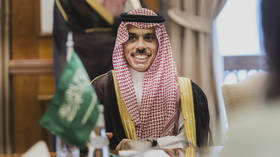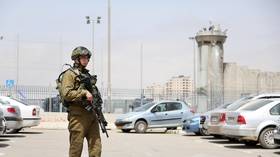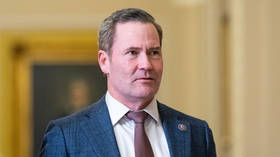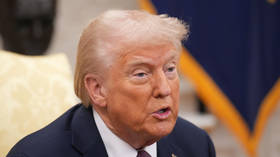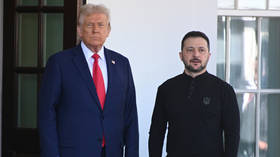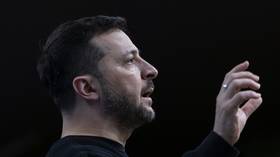India’s Middle East strategy: Is the view from the US misleading?

As India ups its play in the Middle East, expanding ties with Egypt in light of Prime Minister Narendra Modi’s recent visit to Cairo, increasing cooperation with Israel and Arab countries in the Gulf, as well as Turkey and Iran, its strategy is being closely watched in the US, traditionally a dominant player in the region.
RT reached out to prominent foreign policy experts and former diplomats to weigh in on India’s engagement with the region.
A recent article in America’s Foreign Policy magazine described India’s emergence as a “major player” in the Middle East. Columnist Steven A Cook, Eni Enrico Mattei senior fellow for Middle East and Africa studies at the Council on Foreign Relations, argued that India is pursuing a solo approach, which augurs well for countries in the region and helps them to take advantage of multilateralism.
The US shaped its influence in the Middle East on the back of the discovery of oil reserves in Saudi Arabia in the late 1930s, and later became a major supplier of arms to Arab states. More recently, China has started flexing its diplomatic muscles in the region, with President Xi Jinping unveiling his ambitious Belt and Road Initiative (BRI) in 2013. Russia, too, has re-asserted its interest in the hydrocarbon-rich region under President Vladimir Putin’s rule.
Though India shares historical ties with the Middle East – which it prefers to refer to as West Asia, as it considers the former term to be Eurocentric – New Delhi has long looked at the region merely from a remittance-driven economic perspective.
What’s the view from the US?
That has now changed, according to Cook. Citing India’s growing ties with major countries in the region, including Israel, Saudi Arabia, and the UAE, he singled out New Delhi as an alternative partner against the backdrop of the diminishing US role.
“The US may no longer be the undisputed big dog in the region, but as long as India expands its presence in the Middle East, neither Russia nor China can assume that role,” he wrote.
He recalled his visit to India a decade ago, noting that New Delhi’s global ambitions have since undergone a major makeover. “While US officials and analysts are obsessed with every diplomatic move Beijing makes and eye Chinese investment in the Middle East with suspicion, Washington is overlooking one of the most interesting geopolitical developments in the region in years: the emergence of India as a major player in the Middle East,” Cook wrote.
In one of his arguments, the US scholar pointed out that Saudi Arabia and the UAE, both of which are traditionally close to India’s hostile neighbor Pakistan, are looking to expand their ties with New Delhi. Cook’s analysis stems from the fact that India attracts both Riyadh and Abu Dhabi as one of the largest and in many areas still untapped consumer markets in the world. The two biggest regional economies are also looking to weed out Islamist extremism, which is sullying their reputation on the global stage.
Cook acknowledged the “complicated” nature of India-Israel relations, noting that New Delhi remains steadfast in its support for the Palestinians and has friendly ties with Iran, which has been an important source for oil, while Indian elites tend to see Israel “through the prism of their country’s own colonial experience.”
The columnist highlighted India’s differing views from the US and Israel regarding its foreign policy towards Iran, and emphasized the need for Washington to acknowledge India’s independent outreach. Ultimately, he suggested, while India is unlikely to align completely with the US, it is also unlikely to undermine Washington’s interests, as seen in the cases of Beijing and Moscow.
What Indian foreign policy experts think?
Some Indian scholars and former diplomats feel Cook’s analysis is largely based on perceptions rather than hard facts. Kanwal Sibal, a retired Indian foreign secretary and a columnist for RT, has a different take. He weighed in on India’s cooperative diplomacy rather than a solo approach to the Middle East. India is building “plurilateral bridges westwards” through two new ‘Quads’ emerging in the region. One of them being the I2U2 grouping of India, Israel, and the UAE, and the other – a group featuring Saudi Arabia, the UAE, the US, and India.
Putting into perspective how such an approach benefits New Delhi, Sibal explained that it gives greater geopolitical and economic depth and breadth to India’s policies in West Asia. “This is beyond India’s strong bilateral ties with the countries in the region, which is a part of India’s larger neighborhood, where New Delhi has major trade, energy, financial and manpower interests,” he said.
“Significantly, India is acting as a buffer between countries who are historically antagonistic [read Israel and Saudi Arabia and Iran with other Arab states in the region] against each other. Many of the Gulf countries have major plans of economic rejuvenation and modernization, where India can play a key role,” Sibal added.
Talmiz Ahmad, a veteran diplomat who was the ambassador to three countries of the six-nation Gulf Cooperation Council (GCC), namely Saudi Arabia, the UAE, and Oman, and served in the region for 25 years, said India’s approach is based on two principles: it is bilateral and transactional. “Thus, relations with each country are separate from ties with other countries in the region. Relations are based on mutual benefits such as energy security, manpower supply, and economic considerations such as trade and investments. Over 8.5 million Indians work in the region, whose annual inward remittances of $35 billion help Indian foreign reserves to maintain their critical level,” he said.
Ahmad maintained that, unlike China, there is no strategic content in India’s ties with the Middle East. According to the former ambassador, China has been gradually expanding its role in the region. From the early 1990s, the region became a major source of energy supplies to Beijing, which led to a significant expansion in trade relations. China also began to execute several high-value projects across the Gulf estimated at over $100 billion since the 2000s, and more recently expanded its BRI project to include other countries of the region apart from just Iran, as was earlier planned.
From 2020, China began to consider a “quasi-mediation diplomacy” approach to the Middle East to encourage engagement among major countries that harbor grievances toward each other. During President Xi’s visit to Riyadh in December 2022, Saudi Crown Prince Mohammed bin Salman approached him to support a Saudi-Iran dialogue in Beijing, which later resulted in the Beijing Accord, under which the two nations agreed to re-establish diplomatic ties and improve relations in all fields. According to Ahmad, this signifies China’s shifting approach, posing as a player in Middle East politics. India, for its part, has never shown any interest in playing such a role, he argued.
C. Raja Mohan, a senior fellow at the New Delhi-based Asia Society Policy, maintained that it would take some time for India to emerge as a major global power. As for the Middle East, India has to “build as wide a network of partnerships as possible, and to focus on dealing with the growing Chinese power in the Middle East,” Raja Mohan said on a podcast of the Center for Strategic and International Studies. He also noted India’s pragmatism, where New Delhi is engaging with opposing nations as “all major powers currently do.” “They all engage everyone and manage multiple contradictions in the Middle East, and I think under PM Modi, we are learning to do that in a practical way,” he added.
